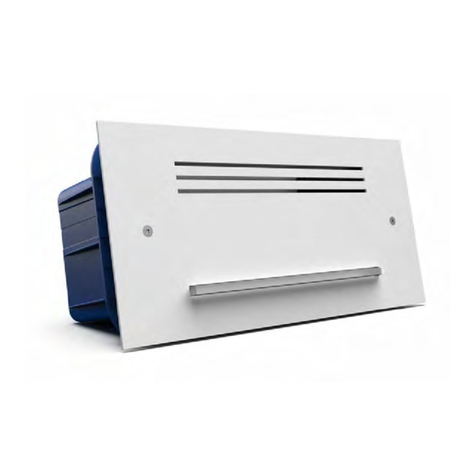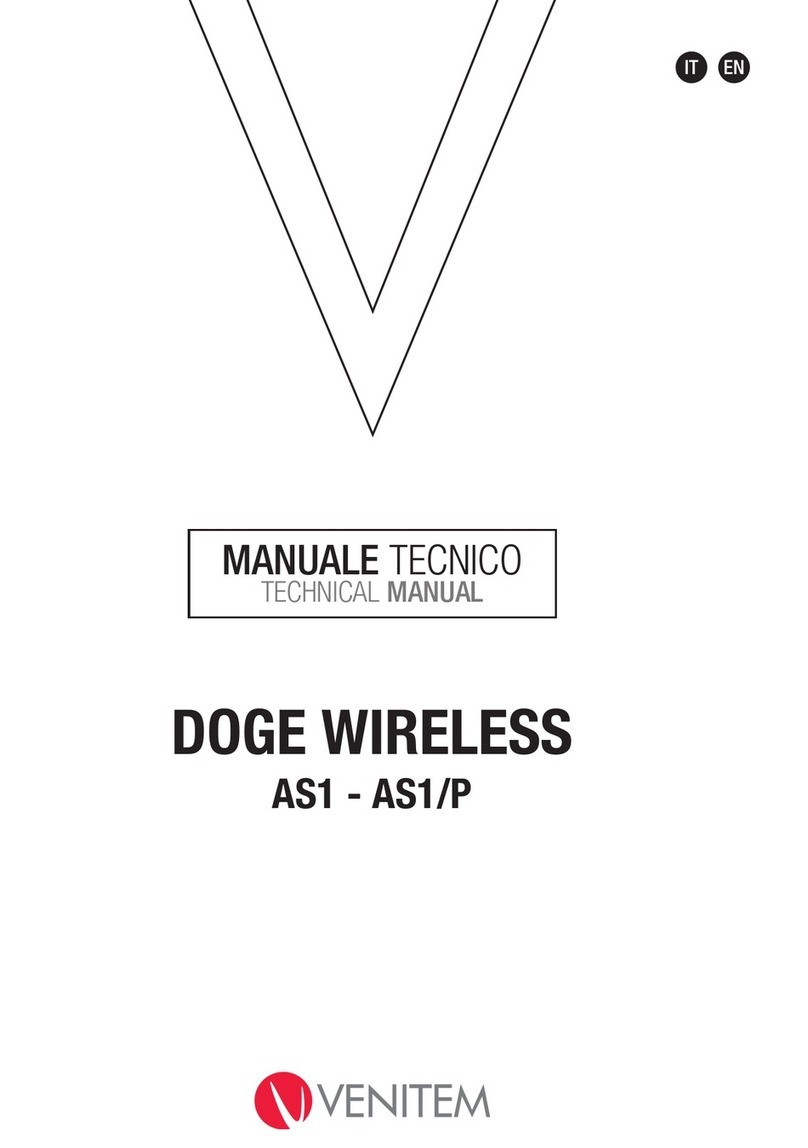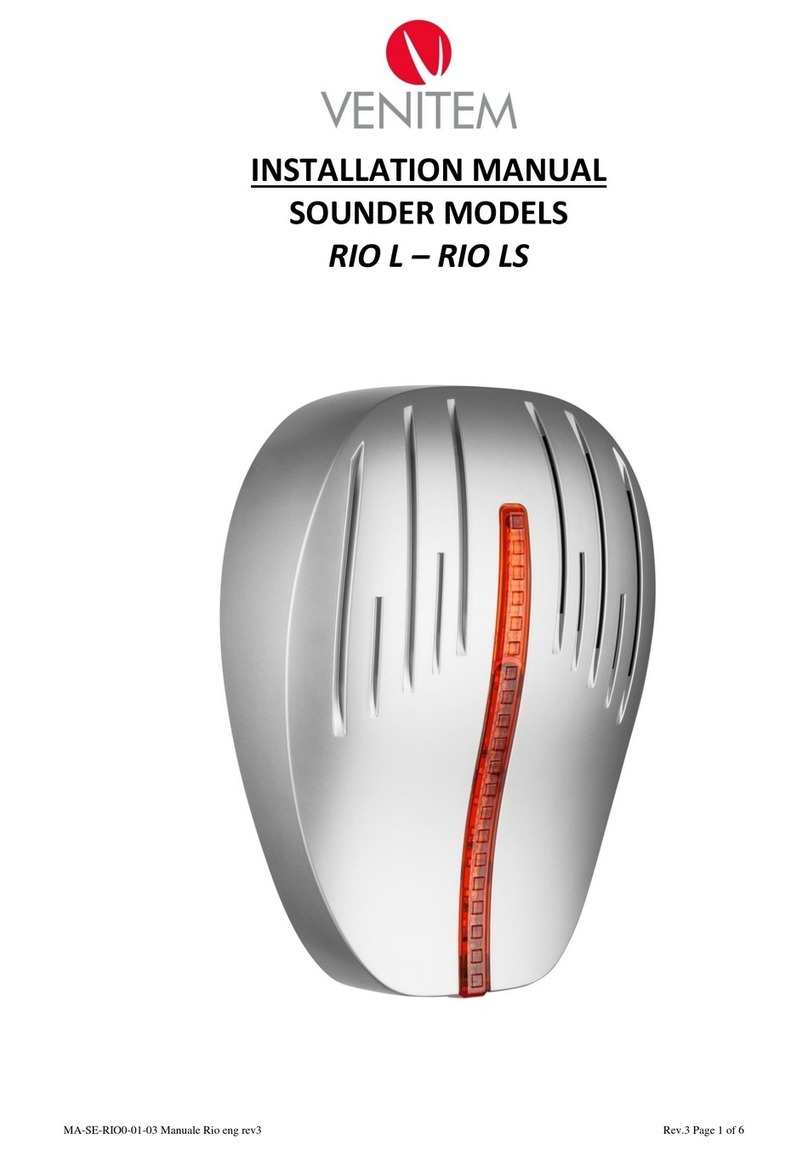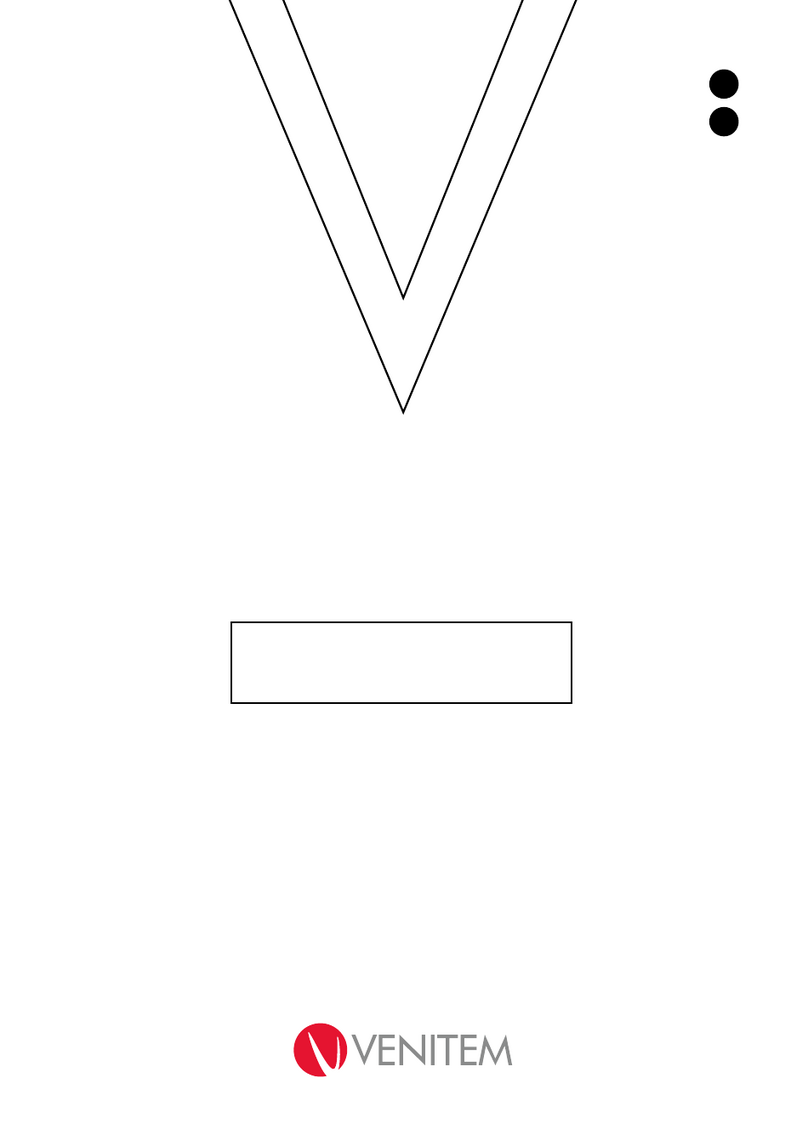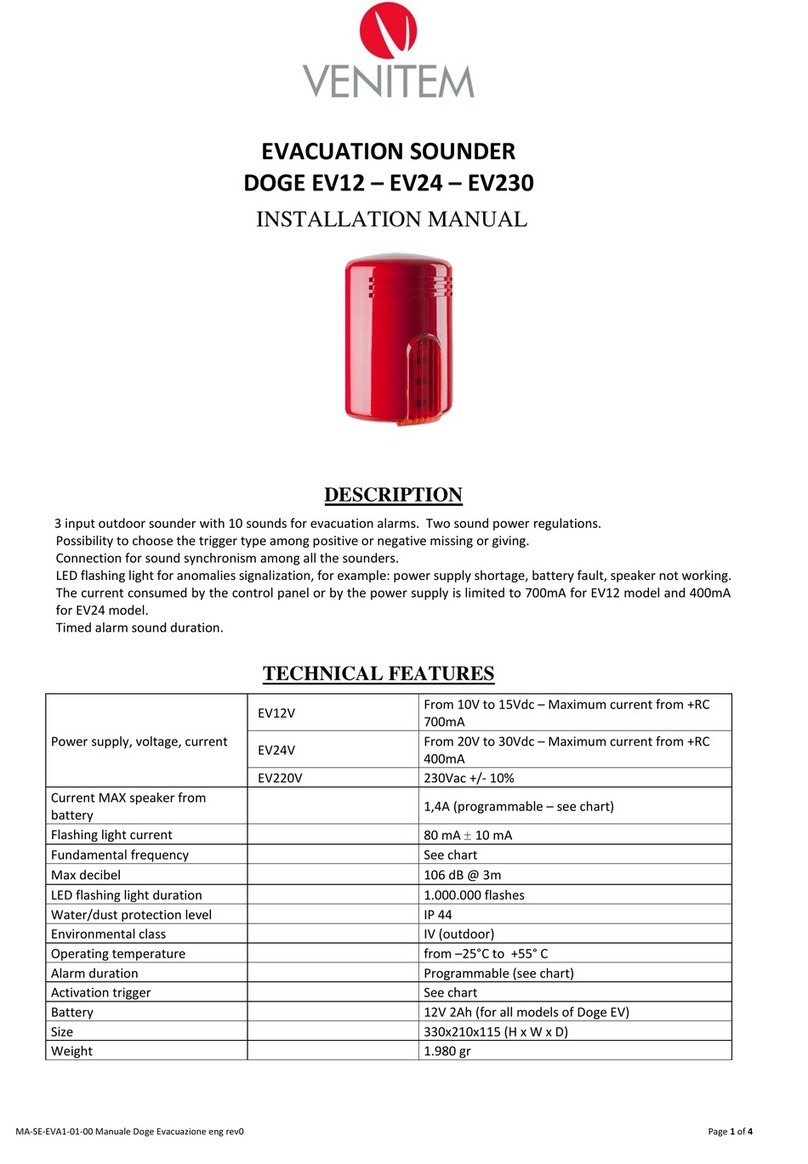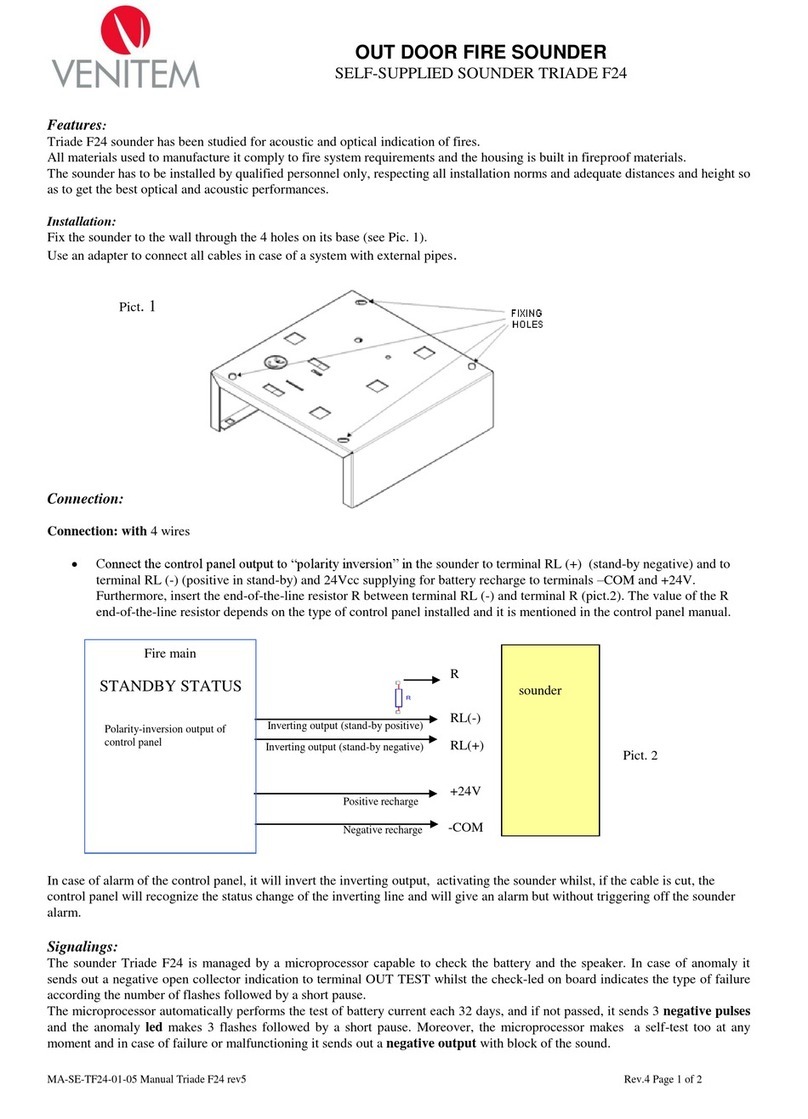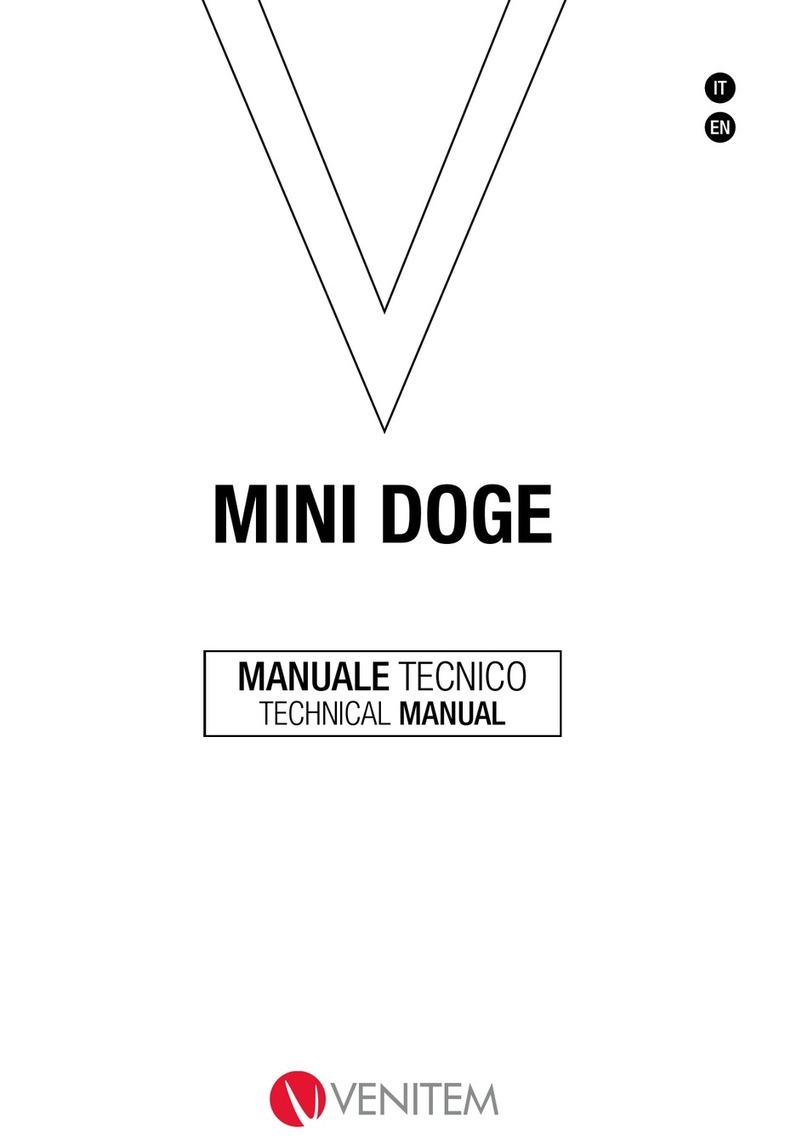
MANUALE TECNICO / TECHNICAL MANUAL
2
DESCRIZIONE
Sirena mod. ONDA con lampeggiante a led ad alta luminosità e basso assorbimento – tamper antiapertura e rimozione – sistema
antischiuma e antishock – programmazione suono e temporizzazione – protezione contro inversione di polarità – autocontrollo a
microprocessore di: batteria e speaker con relativa uscita negativa di anomalia – programmazione di polarità comando sirena e ON/
OFF impianto – segnalazione ottica ON-OFF impianto istantanea e permanente – circuito elettronico protetto da inversioni di polarità e
tropicalizzato in resina contro gli agenti atmosferici e l’umidità – coperchio esterno, interno e fondo in metallo.
SCHEMA DI COLLEGAMENTO
CENTRALE ALLARME
TAMPER
TAMPER
USCITA ANOMALIA
BLOCCO SIRENA
STATO IMPIANTO
CONTROLLO SIRENA
+13.8 Vcc
– GND
+21– 43 65 87
1 2 3 4 5
MORSETTI CONNESSIONI
–RIC (1) NEGATIVO ALIMENTAZIONE 0V GND
+RIC (2) POSITIVO ALIMENTAZIONE +13,8V
+C (3) CONTROLLO SIRENA
STI (4) ON/OFF SEGNALAZIONE STATO IMPIANTO
BLS (5) INGRESSO BLOCCO SUONO SIRENA
OUT ANM (6) USCITA ANOMALIA.
OPEN COLLECTOR, 0V = NESSUNA ANOMALIA
TAMPER (7) AUTO-PROTEZIONE E ANTISCHIUMA N.C.
TAMPER (8) AUTO-PROTEZIONE E ANTISCHIUMA N.C.
BLS. BLOCCO SIRENA
Attiva il comando di interruzione suono portando un negativo (0V) al morsetto 5.
USCITA ANOMALIA
La sirena è gestita da un microprocessore in grado di controllare la presenza della ricarica, la batteria, la tromba; in caso di anomalia il
morsetto (6) open-collector si apre.
Il microprocessore esegue automaticamente ogni 4 ore il test di corrente batteria e altri test continuamente. Normalmente, con la sirena
alimentata correttamente l’uscita di anomalia (morsetto 6) rimane a 0V (corrente massima 50mA). In caso di non superamento di
qualsiasi test l’uscita di anomalia si scollega da massa e diventa libera.
Al momento della prima alimentazione della sirena (13,8V o batteria), per facilitare l’installazione,le anomalie si resettano automaticamente
quando la causa scompare. Dopo il primo comando di allarme o ON/OFF le anomalie si resettano solo con un comando al morsetto STI,
+C. Per avviare il test da remoto portare a 12V il morsetto n°4 (STI) per 10 secondi e poi togliere la tensione allo stesso. In questo modo
viene avviato il test che dura 60 secondi. Durante il test la sirena verifica il proprio funzionamento e segnala le eventuali anomalie attraverso
l’uscita anomalia. Per resettare l’anomalia rimuovere la causa dell’anomalia, attendere 10 secondi e portare a 12V il morsetto
n°4 (STI) per almeno 10 secondi. Togliendo brevemente il comando al morsetto +C si resettano tutte le anomalie eccetto quelle
di batteria, solamente dopo 4 ore dal ripristino della batteria la sirena ri-esegue i test e quindi aggiorna anche le anomalie di
batteria.
COMPORTAMENTO CON BASSA TENSIONE
Attenzione: Quando l’alimentazione (ricarica) della sirena è inferiore a 10,5V e la tensione della batteria è inferiore a 9,5V la sirena va in
blocco per evitare falsi allarmi. Appena le tensioni risalgono, la sirena riprende il normale funzionamento.
COLLEGAMENTO TAMPER (ANTIAPERTURA E RIMOZIONE, ANTISCHIUMA E ANTISHOCK)
Collegare ai morsetti n°7 e n°8 la linea tamper proveniente dalla centrale.
DIP-SWITCH
DIP 1 TEMPORIZZAZIONE ALLARME
• Dip-switch 1 in OFF DA FABBRICA il tempo di allarme è di 3 minuti.
• Dip-switch 1 in ON il tempo di allarme è di 8 minuti.
DIP 2 POLARITÀ INGRESSO CONTROLLO SIRENA
N.B.: L’INGRESSO DI DEFAULT È A MANCARE
• Dip-switch 2 in OFF DA FABBRICA il comando per attivare la sirena è positivo.
• Dip-switch 2 in ON il comando per attivare la sirena è negativo.


